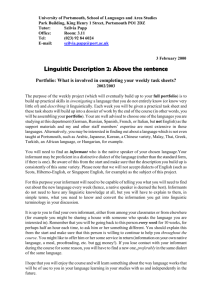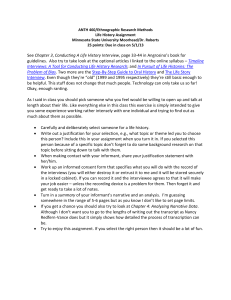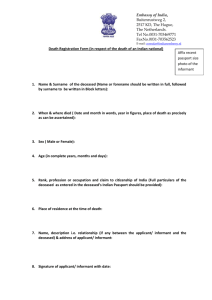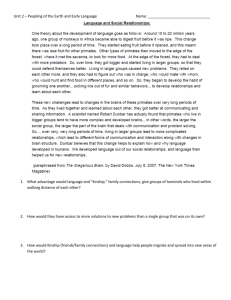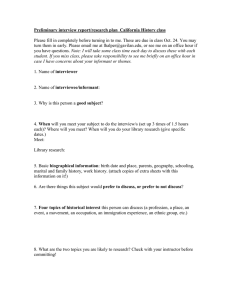ANTH 2351 Ethno 3 - Kinship.doc
advertisement
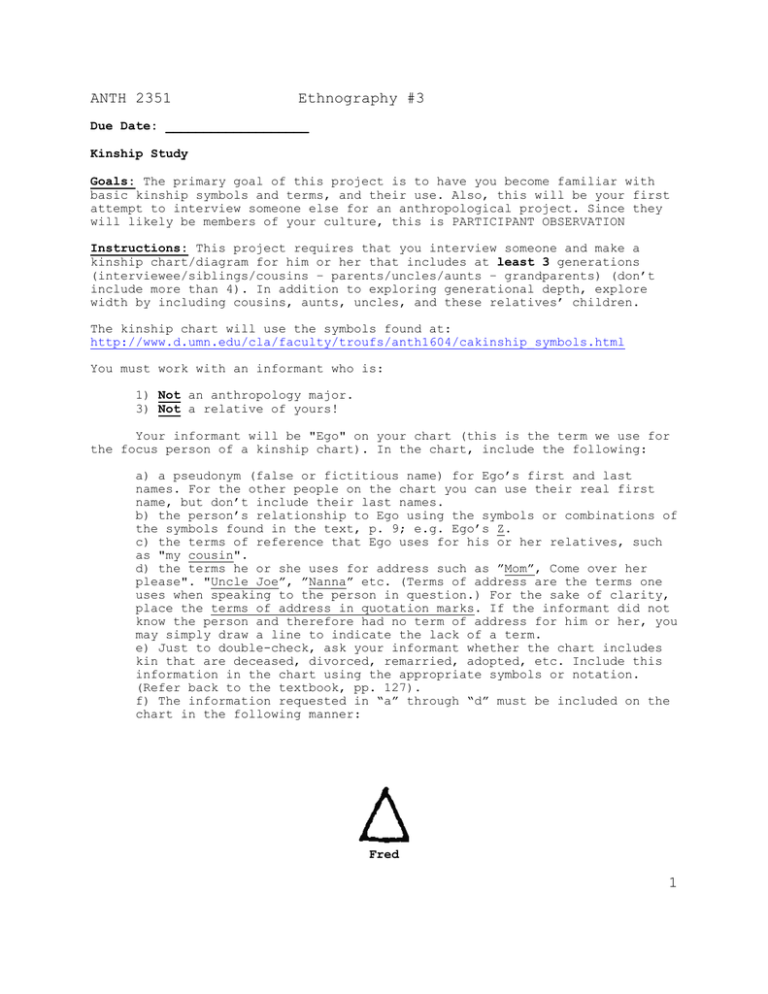
ANTH 2351 Ethnography #3 Due Date: ___________________ Kinship Study Goals: The primary goal of this project is to have you become familiar with basic kinship symbols and terms, and their use. Also, this will be your first attempt to interview someone else for an anthropological project. Since they will likely be members of your culture, this is PARTICIPANT OBSERVATION Instructions: This project requires that you interview someone and make a kinship chart/diagram for him or her that includes at least 3 generations (interviewee/siblings/cousins – parents/uncles/aunts – grandparents) (don’t include more than 4). In addition to exploring generational depth, explore width by including cousins, aunts, uncles, and these relatives’ children. The kinship chart will use the symbols found at: http://www.d.umn.edu/cla/faculty/troufs/anth1604/cakinship_symbols.html You must work with an informant who is: 1) Not an anthropology major. 3) Not a relative of yours! Your informant will be "Ego" on your chart (this is the term we use for the focus person of a kinship chart). In the chart, include the following: a) a pseudonym (false or fictitious name) for Ego’s first and last names. For the other people on the chart you can use their real first name, but don’t include their last names. b) the person’s relationship to Ego using the symbols or combinations of the symbols found in the text, p. 9; e.g. Ego’s Z. c) the terms of reference that Ego uses for his or her relatives, such as "my cousin". d) the terms he or she uses for address such as ”Mom”, Come over her please". "Uncle Joe”, ”Nanna” etc. (Terms of address are the terms one uses when speaking to the person in question.) For the sake of clarity, place the terms of address in quotation marks. If the informant did not know the person and therefore had no term of address for him or her, you may simply draw a line to indicate the lack of a term. e) Just to double-check, ask your informant whether the chart includes kin that are deceased, divorced, remarried, adopted, etc. Include this information in the chart using the appropriate symbols or notation. (Refer back to the textbook, pp. 127). f) The information requested in “a” through “d” must be included on the chart in the following manner: Fred 1 ANTH 2351 Ethnography #3 FaBr My Uncle “Uncle Freddy” Then ask your informant to talk about kin with whom he or she has the “very strongest” ties and “weakest” ties. Strongest and weakest can be defined any way that the informant understands these terms. Ask for explanations about strongest and weakest ties, e.g., “How did they become strong or weak?”, What sorts of emotional and financial aid did the “strong” kin provide?”, “Why do you say you have weak ties with kin person ‘X’?”, etc. Your GOAL HERE IS TO DETERMINE WHY RELATIONSHIPS WITH SOME FAMILY MEMBERS ARE STRONG AND SOME ARE WEAK. Privacy and Confidentiality: Make it clear that the interviewee’s participation is voluntary as are the kinds of information divulged during the interview. It is also important that you preserve the confidentiality of your informant’s name by referring to your informant with a pseudonym (fictitious name) in the written account of the strongest and weakest ties. And tell the informant that you are taking this safeguard. Hand in: 1) a kinship chart with the information requested in “a” through “e” above. This need not be typed. (The chart should be a sized so that I can easily carry it away. You can use 2 or more pages if the informant has a large kin network.) 2) a short (1-2 page) typed and double-spaced discussion of the informant’s weakest and strongest ties. 3) notes you took during your interview with your informant, any rough drafts of the kinship chart If your native language is English, Extra-credit will be given to those students who interview someone whose native language is NOT English, and who elicit a genealogical chart in a non-English language. If you are fluent in a language other than English and you elicit a genealogical chart in that language, that will not count as extra-credit. Select a language you are not fluent in for extra-credit. 2
